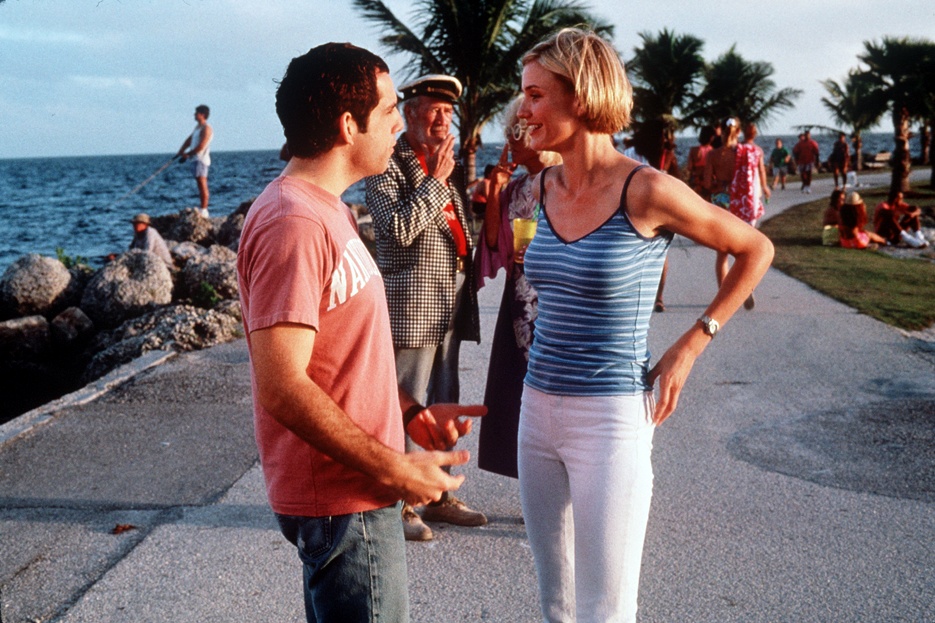By Heidi Stevens
Chicago Tribune
WWR Article Summary (tl;dr) Columnist Heidi Stevens takes a look at a popular media trope which many of us take for granted where a male’s “invasive stalker-like behavior is presented as an endearing or harmless part of romantic courtship.”
Chicago Tribune
If you, like me, read the story about the 14-year-old Oklahoma boy who recently stabbed a girl repeatedly at a school assembly for rejecting him and thought, “What is happening…?”
And if you, like me, fully understand that there’s not one thing happening, not one thing that leads to a boy turning violent when he hears no from the girl he desires …
But if you, like me, think it’s high time we examine some of the cultural messages we’ve simply taken for granted, to see if they could be contributing to this mess of factors that lead to such violence …
Then you should watch “Stalking for Love.”
It’s a video essay by Jonathan McIntosh, who runs the Pop Culture Detective Agency blog.
“Stalking for love is a popular media trope where invasive stalker-like behavior is presented as an endearing or harmless part of romantic courtship,” McIntosh writes, by way of introducing his video. “The hero will often go to extraordinary lengths to coerce, trick or otherwise manipulate his way into a woman’s life.”
McIntosh is not the first person to pick up on this trope. (Nor does he pretend to be; he lists links and resources below his video.)
In 2016, Julia Lippman, a postdoctoral fellow at the University of Michigan released a study called “I Did It Because I Never Stopped Loving You: The Effects of Media Portrayals of Persistent Pursuit on Beliefs About Stalking.”
The Atlantic published a fascinating essay the same year titled “How Rom-Coms Undermine Women: American culture has long been confused about the location of the line between love and violence.”
The Onion, in all its sharp-eyed brilliance, ran a story in 1999 headlined “Romantic-Comedy Behavior Gets Real-Life Man Arrested.”
All worth your time.
“Stalking for Love,” though, summarizes the prevalence and problematic nature of the setup in 24 minutes of movie examples, ranging from “The Notebook” to “There’s Something About Mary” to “Say Anything” to “Love, Actually” to “Wedding Crashers” to “Twilight.”
“Our hero is typically a nice guy who doesn’t quite fit the Hollywood ideal of manhood,” McIntosh narrates. “And who, for a variety of reasons, hasn’t found love. One day, he sees a very special woman and instantly becomes infatuated with her. Time slows down. The music swells. And the camera zooms in. These audiovisual cues are designed to communicate to us, the audience, that this is true love. But wait, there’s just one small problem. She doesn’t return his feelings. Maybe she’s dating someone else. Maybe she’s already rejected him. Maybe she doesn’t even know he exists. Or maybe she’s just not interested.
“What’s a nice guy to do when faced with such a dilemma? Well, he’s certainly not going to give up. No, he’ll do whatever it takes. This is true love after all, or it will be once he convinces this woman to love him back. And so, to that end, our hero proceeds to spy on her, pester her and otherwise manipulate her until he finally manages to wear down her defenses and she agrees to go out with him.”
The obsessive, coercive behavior is framed as an expression of the male character’s love and devotion, McIntosh explains. And even if the female character is upset or annoyed by his attention, his actions are framed as a compliment.
“The specific circumstances and severity of the stalking behavior will vary from story to story,” McIntosh says in the video. “But the bottom line here is that these male characters all refuse to respect women’s boundaries, women’s personal space or women’s privacy. They don’t listen to women’s words and they ignore all signals of disinterest or rejection. In short, they refuse to take ‘no’ for an answer.”
That’s worth examining.
To be clear: A careful look at Hollywood cliches isn’t policy change. It’s not even close to the whole conversation we need to have about violence against girls and women in this culture. It’s barely a drop in the bucket.
But it’s a conversation worth having, especially when we’re digesting entertainment with the children in our lives.
It’s worth pausing, I think, when we see stalking for love in a movie or TV show, and turning to our kids and saying, “That’s not love. That’s not flattering. That’s not the start of something beautiful.”
“There’s no reason why Hollywood can’t tell love stories where all parties involved treat each other with respect,” McIntosh says in his video. “Even within the realm of mutual respect, there are countless possibilities for quirky or humorous scenarios. The obstacles to romance can come in any number of forms: things like family disapproval, or illness or geographic location. Just to name a few. There’s no reason why the central conflict in romance media needs to involve stalking behavior. And, honestly, making people feel unsafe is a terrible, terrible way to show you care about them.”
That’s a pretty great conversation starter right there.
“If you ask someone out and they’re interested, great,” he continues. “But if they say they’re not interested, it’s not your job to test them on it or to try to figure out if maybe they’re just playing hard to get. And rejection is not an invitation to try to coerce them into changing their minds. Sure, rejection doesn’t feel good, but the respectful thing to do is to gracefully accept ‘no’ for an answer.”
Despite what happens in the movies.














































































































































































































































































































































































